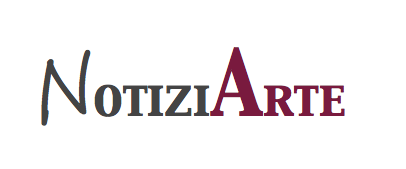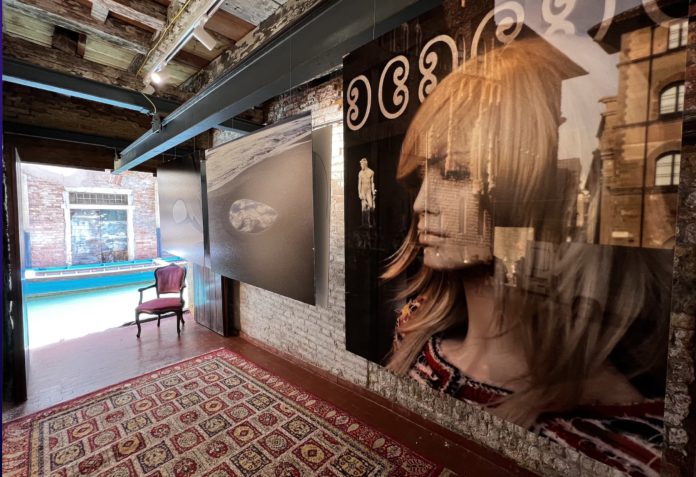
When Technology and Neuroscience meet Art and Photography, innovative projects arise that bring progress in scientific research on the one hand and project us into a new aesthetic dimension on the other. In this direction, I invite you to explore and discover “NEFFIE”, an acronym for “Neuroaesthetic Photography”, an interdisciplinary project aimed at exploring the possibilities offered by the application of Artificial Intelligence to the world of neuroaesthetic experience – and beyond. NEFFIE aims to create an experiential and experimental laboratory in which Photography, Neuroscience, Artificial Intelligence, Augmented Reality, Virtual Reality, Non-Fungible Tokens (NFT) and Metaverse can converge. Behind this pioneering yet interesting project in continuous evolution, we meet Alberto Sanna, Director of the Research Center Advanced Technology in Health and Well-Being at the San Raffaele Hospital in Milan – and Francesca Pola, Associate Professor of Contemporary Art History at the Vita-Salute San Raffaele University in Milan. I had the pleasure of getting to know Eng. Sanna and Prof. Pola, and from this meeting the idea of doing this interview was born to tell and learn more about their work and – of course – NEFFIE – www.neffie.eu -.
NEFFIE is curated and developed by the collaboration between the Research Center Advanced Technology in Health and Well-Being of San Raffaele Hospital, and ICONE, the European Research Center in History and Theory of the Image of the Vita-Salute San Raffaele University in Milan
For Italian version click here: https://notiziarte.com/2022/11/08/neffie-la-neuroestetica-fotografica-lintervista-ad-alberto-sanna-e-francesca-pola/
Interview with Alberto Sanna and Francesca Pola
RP: When was the NEFFIE project born and with what purpose?
AS: My first ideas and intuitions about what is now the NEFFIE project began to settle about a decade ago, when I decided to get back into photography, my great youthful passion, after having abandoned it just at the time when new digital technologies were replacing analog, in conjunction with an intense research activity in technology and medicine at San Raffaele Hospital. By now Director of the Research Center Advanced Technology in Health and Well-Being at San Raffaele Hospital in Milan, I thought that I had to find a way to recover that vocation, reinventing and reinterpreting my youthful authorial line in the light of the knowledge and skills acquired during my years as a researcher. The answer presented itself before my eyes in the form of two metropolitan graffiti photographs of me, the first was “Love Your Wall,” the cover of a catalog I never made; the second read “Want You”: the writing was placed next to a blurred image of Milan Cathedral, in relation to which it changed its meaning, becoming a declaration of love for the icon of the Lombard city. The two metropolitan elements were correlated by the eye and mind of the observer, anticipating the meaning of the NEFFIE project and its neuro-aesthetic mechanism. To date, Neuroaesthetic Photography is an encoded visual language capable of stimulating in us a series of emotional-cognitive mechanisms that are collected through specific technologies and biosensors, then processed by an Artificial Intelligence algorithm and interconnected with each other in a collective Metaverse. The project has been presented in various international contexts with the aim of making individuals aware of their visual experiences, now addicted to the continuous bombardment of visual stimuli of all kinds to which our “society of the image” subjects us. The largely positive feedback we received on such occasions led us to plan our most recent Virtual Exhibition in Real Time No. 4 at the end of October, at the prestigious Beatrice Burati Anderson Gallery in Venice, and in collaboration with the historian and critic of Contemporary Art Annamaria Orsini, as an explicit homage to Franco Vaccari’s iconic artistic operation at the ’72 Biennale in his Exhibition in Real Time no. 4: Leave a photographic sign of your passage on these walls.
FP: I would like to reconnect with the concept of image introduced by Engineer Sanna to motivate the collaboration between the Research Center Advanced Technology in Health and Well-Being and ICONE, the European Research Center in History and Theory of the Image of the Vita-Salute San Raffaele University, which has made it possible to combine technological innovation with a structured historical-theoretical thinking, capable of grasping the specificity of the great technological and expressive transformations brought about by the digital revolution not only at the instrumental level, but in the very conception of the image and its thought. It is on the fruitful dialogue between these two polarities, only apparently unrelated but in reality, deeply interconnected, that the NEFFIE project is based in its authentically multidisciplinary and collaborative nature, configuring itself as a unicum in the contemporary research landscape. Its goal is the creation of an experiential and experimental laboratory in which Art, Photography, Technology and Neurosciences can converge, producing an increasingly widespread and shared awareness of our cognitive-emotional experiences, where the image is not an ancillary component, but is essential and foundational to Human Well-Being in its broadest and most authentic meaning. Neuroaesthetic Photography, therefore, gives tangible and experiential form to the shared mission of the Hospital and Vita-Salute San Raffaele University to promote and ensure the health of Human Being understood as a state of physical, mental and relational Well-Being, closely intertwined with cultural and creative development and aimed at improving the quality of individual and collective life.

RP: NEFFIE is a project that is as fascinating as it is innovative and is developed on three macro levels: metapictures, the NEFFIE technology platform that transforms “Neffie metapictures” into “Coffie metapictures”, and a dedicated cultural program. Regarding NEFFIEs, we are talking about photographs that have particular characteristics: can you explain them to us?
AS: The photographs I made for NEFFIE are the result of an activity settled over time, the result of an intense photographic research that has been with me since I was young. They are absolutely unique and special photographic shots, without any kind of post-production, capturing that precise moment in time when an ephemeral image is created on a reflective and translucent surface, generating unexpected mechanisms of semantic aggregation that stimulate the eye and mind of the observer. I like to call them “metapictures”, a term I borrowed from W.T.J. Mitchell, one of the fathers of contemporary visual culture, to define a kind of “nesting” of one image within another. The first example that comes to mind, having just been in Venice for our Virtual Exhibition in Real Time No. 4, is the photograph titled The Schrödinger’s Lover, where the reflection of the Venetian canal on the window of a clothing store creates an ephemeral meta-image that is that of the mannequin’s hand seemingly grasping the gondola, either pushing it away from itself or holding it back: interpretations can be multiple and recombinant. Such visual ambiguities are further enriched by other features such as the relationship of the metapicture to its own text and graphics, its relationship to other metapictures, their text and graphics, and the relationship between the ambiguities of visual language and those of textual language. In this case, the title of the shot recalls a famous illogical and counter-intuitive quantum physics paradox based on some key concepts such as quantum superposition and multiverse, which find their visual and artistic expression in photography. The Schrödinger’s Lover is, in fact, a metapicture generating multiple stories, multiple narrative multiverses all based on the interaction between the mannequin’s hand, the gondola in the Venetian canal and a border that is as imaginary as it is real. The semantic superimposition of the image generates interpretations that are all simultaneously and potentially true until the viewer chooses one (or more than one) by actualizing it with his or her own gaze in relation to the emotional-cognitive interpretation derived from his or her own experience. The title graphic is also evocative: Schrödinger’s “ö” is placed in perfect correspondence with the axis of symmetry of the image and, therefore, dialoguing with it in amplifying the interpretive ambiguity between continuity and separation. My hope is that these kinds of semantically complex images will “teach” us to read reality in depth, with ever new eyes, correlating its visual elements to create narratives.

RP: From NEFFIE to “Coffie”: here the passage is definitely very interesting – it is the heart of the project. Can you explain how “Coffie metapictures” are generated and what technology is used to make them?
AS: The process of generating Coffie metapictures involves the NEFFIE technology platform, that is, a technologically revamped photo booth used as an art platform, within which the active experience of the one I call the “Second Level Author” or “Secondary Observer” takes place. In practice, the observer enters the booth and wears a set of noninvasive biosensors that extrapolate brain, emotional and cognitive responses from electroencephalic activity (EEG), eye movement (Eye tracking), electrodermal activity (EDA), heart rate (PPG) and facial expressions (FER). This person is shown, at his or her choice, one of the Neffie metapictures taken by the so-called “First Level Author” or “Primary Observer.” Then the process of observing and interpreting the image takes place, during which the biosensors – EEG, EDA, PPG, FER and Eye tracking – acquire a set of neurophysiological data, which are then reprocessed by an Artificial Intelligence algorithm. The algorithm reconstructs the neurophysiological process and generates a reinterpretation of the observed image that is a tangible result of our neuro-aesthetic experience, as well as our visual identity: the Coffie metapicture (an acronym for “Cognitive Photography”). Each metapicture, in addition to being physically available in the hands of the observer, is then indexed on the Ethereum platform associated with an NFT and connected to others in the NEFFIE Metaverse.
FP: I believe that of all the vast production of photographs offered in the contemporary landscape, Coffie metapictures certainly represent a unique genus. Compared to “traditional” digital cameras based simply on the detection of density and color parameters, the NEFFIE photo booth adds a greater level of complexity and depth represented by sensors that extrapolate subjective cognitive information, which is then reprocessed by Artificial Intelligence. The underlying technology is complex, but its purposes are simple: to place back in the hands of the individual his or her identity as a multifaceted and unrepeatable visual experience, giving tangible form to that punctum Roland Barthes spoke of in La Camera Chiara, that detail that “pricks” just me and no one else by virtue of its ability to evoke personal histories and events, indicative of a mode of perception of reality that is unique to each of us. Each of these cognitive photographs is then interrelated to the others in the NEFFIE Metaverse, giving rise to a place of mutual sharing and exchange, the main purpose of which is individual and collective recognition and enrichment, giving rise to an aesthetic that is “generative” of relationships and not merely representational, allowing us to rethink new forms of inclusive, participatory and digital sociality, as well as new forms of “connective” rather than simply “collective” intelligence, as defined by Derrick de Kerckhove and Pierre Lévy, respectively.
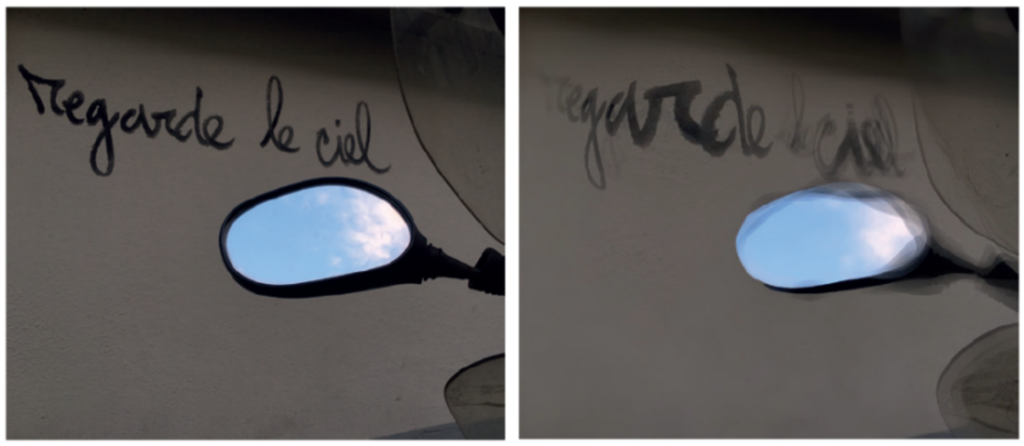
RP: What studies at the scientific and neuroscientific level have been put in place to be able to translate the emotional and cognitive response of a multi-level reading image into a new image?
AS: Current research on the neural mechanisms underlying our perceptual experiences owes much to the pioneering work of scholars such as Changeux, Ramachandran, Hirstein and Zeki, who are also reference points for the development of our project. To date, we can say that aesthetic experience involves brain areas deputed to different functions: starting with the occipito-temporal regions for visual analysis and recognition of stimulus identity, moving on to the fronto-parietal regions associated with the so-called “mirror system” for the analysis of kinematic aspects, and arriving at the meso-limbic brain regions such as the insula, amygdala and orbifrontal cortex for the analysis of the “hedonic” aspects of aesthetic experience. Often, however, the use of functional magnetic resonance imaging to identify such brain areas has certain physical and temporal limitations, such as the impossibility of presenting images for as long as is necessary for the observer to ensure accurate contemplation or the particularity of the conditions under which the subject is observing such images. Instead, the NEFFIE project uses new technologies and wearable sensors capable of measuring physiological dynamics involving cognitive and emotional aspects. With electroencephalography (commonly known as EEG) it is possible to detect the electrical activity produced by populations of neurons on the cerebral cortex. Eye-tracking, on the other hand, allows eye movements and fixation points to be detected to identify which aspects of the image catch the observer’s attention and come to his or her consciousness. With facial expression recognition, on the other hand, it is possible to capture the emotions expressed by the face by measuring the degree of contraction of facial muscles associated with the expression of specific emotions, such as happiness, fear, anger or disgust. In addition, measuring the galvanic response of the skin can detect a person’s level of emotional activation. This technique measures changes in the skin’s electrical characteristics, such as conductance, caused by the level of sweating. Finally, with photoplethysmography (commonly known as PPG), changes in blood volume can be measured by detecting changes in blood flow within blood vessels. The set of acquired information is then processed through a complex Artificial Intelligence algorithm, which reconstructs the neurophysiological process by generating a tangible reinterpretation of the observed image as a result of our neuro-aesthetic experience.

RP: From Franco Vaccari to the Metaverse: the step is not so obvious. Can you tell us about your Metaverse?
FP: The NEFFIE Metaverse is inspired, explicitly as much as actively, by Franco Vaccari’s iconic artistic operation in his Exhibition in Real Time no. 4: Leave a photographic sign of your passage on these walls presented fifty years ago at the 1972 Venice Biennale. His work consisted of providing visitors with a photo booth next to a blank wall with the inscription “Leave on these walls a photographic sign of your passage.” Visitors were invited to insert a coin and take a strip of photographs and hang them on the wall. Those who entered the booth could express themselves freely and actively, deciding to share their presence publicly and instantly. By eclipsing himself as author, Vaccari eliminates the sacred triad of photographer-machine-subject and leaves it to the technological unconscious of the machine to produce the images and the work itself. As he would write a few years later referring to his use of the photographic mechanism, “Once the process was triggered, the technological unconscious of the machine, solicited by the environment, produced a new reality that obeyed its own necessity; its very evasion of manipulation, its resistance to personalistic use, guaranteed that something new and unexpected would be seen in the end.” (F. Vaccari, 1979).
The exhibition in real time took shape as a growing organism, giving life to a wall filled with thousands of strips produced by the photographic medium, no longer considered as a technological control device (the booth that produces passport photos intended for our identification documents), but as an artistic tool of aesthetic awareness and emancipation. Neuroaesthetic Photography recovers this approach in the context of our post-digital society, eliminating the photographer-spectator polarity to leave the role of the “neuroaesthetic unconscious” to Artificial Intelligence, and giving birth to the Virtual Exhibition in real time: a collective action unmediated by any authorship, which is a hypothesis of contemporary reactualization of Vaccari’s iconic wall. To date, the NEFFIE Metaverse is a place of integration and exchange between different visual cultures, which relate to each other on the basis of these what we can call true “conversational images,” that is, images that we use to articulate our interpersonal dialogues (as defined by André Gunther). In this, NFTs (with which not only each individual NEFFIE is associated, but also and especially each individual COFFIE) play a key role in ensuring both the uniqueness of individual co-creative experiences and the authenticity of interpersonal relationships between co-authors.
AS: To add a few technical details to the excellent description just given by Prof. Pola, the NEFFIE Metaverse, created in collaboration with ETT and accessible through our website www.neffie.eu designed by Engitel, is a virtual exhibition space in which individual neuroaesthetic experiences that are created and recreated between NEFFIE metapictures and Primary Observer Metadata and COFFIE metapictures and Secondary Observer Metadata are interwoven, generating a collective neuroaesthetic unconscious. This last part of the NEFFIE Code devoted to the Metaverse is called “Nef-tie,” where “tie” in English properly means “bond” and refers to the relationships that are created and recreated among individuals, all of whom are symbolically united by reference to the original NEFFIE metapicture. From a more technical point of view, this is possible thanks to blockchain-based logics and circuits: our project has developed with the Politecnico di Milano a playground, a test chain on the Ethereum platform that allows the tokenization of images in NFTs, which are then deposited autonomously in the Metaverse.
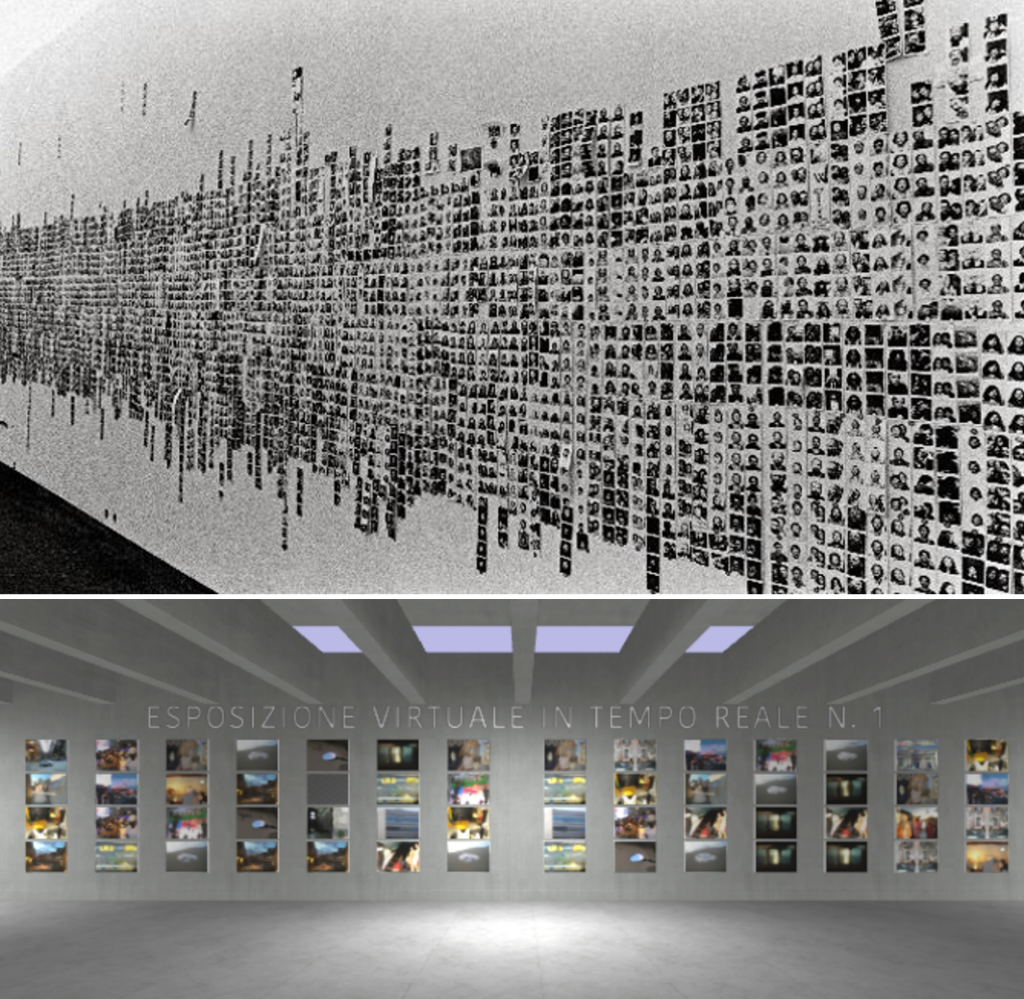
mong different professionals and academics, who can elaborate orientation hypotheses regarding all those avant-garde technologies that are redefining, in real time, the image and its coordinates of experience, such as Artificial Intelligence, NFTs, Blockchain, Metaverse. For us, the cultural program integrated with the NEFFIE project is both a way to develop research on these contemporary coordinates of the becoming experience of images and a privileged space to be able to share, test, verify it “in real time.” In both aspects, the aim is to articulate a thought on the image charged with theoretical and historical awareness, which relates directly to society and the present world, in order to build an authentically and profoundly human future, precisely in its technological advancement. It is an active vocation that unites our ICONE research center also with its more immediate didactic declination, which is our Master’s Degree Course in Theory and History of the Arts and the Image at the Vita-Salute San Raffaele University, where we seek to develop an education on the arts that is projectuality and actively aware of its historical and theoretical roots, but also of its present and future challenges.
RP: People – and their perceptions – are an active part of the NEFFIE project. During the exhibitions and events at which you presented NEFFIE, how did the audience called to participate in what we might call an art project about the perception of photography react?
AS: The active participation of people and their experiential and perceptual backgrounds is a fundamental element of the project, which thrives on individual neuroaesthetic experiences. What is most attractive is precisely the idea – concretized through technology – of becoming part of the creative process and giving tangible form to one’s emotional-cognitive reactions in front of an image, which are very often difficult to translate or conceptualize into words. The individual experiences take on a collective artistic value thanks to the Metaverse, which connects a very wide target audience of visitors: from young teenagers to adults, from innovation and Hi-Tech experts to gallery owners in the contemporary art system, from professional photographers to amateurs, all united by a common denominator: the active involvement that NEFFIE proposes. More than 580 people have enthusiastically experimented with the NEFFIE Platform, populating the Metaverse during events such as the World Artificial Intelligence Cannes Festival (WAICF) in Cannes, the MIA Milan Image Art Fair in Milan, the exhibition at the Catherine Issert Gallery in Saint Paul de Vence, and now on the current occasion in Venice, at the Burati Anderson Gallery, the Virtual Exhibition in Real Time No. 4, presented at the same time as the 59. International Venice Art Biennale Exhibition as an explicit homage to Franco Vaccari’s Exhibition in Real Time No. 4.
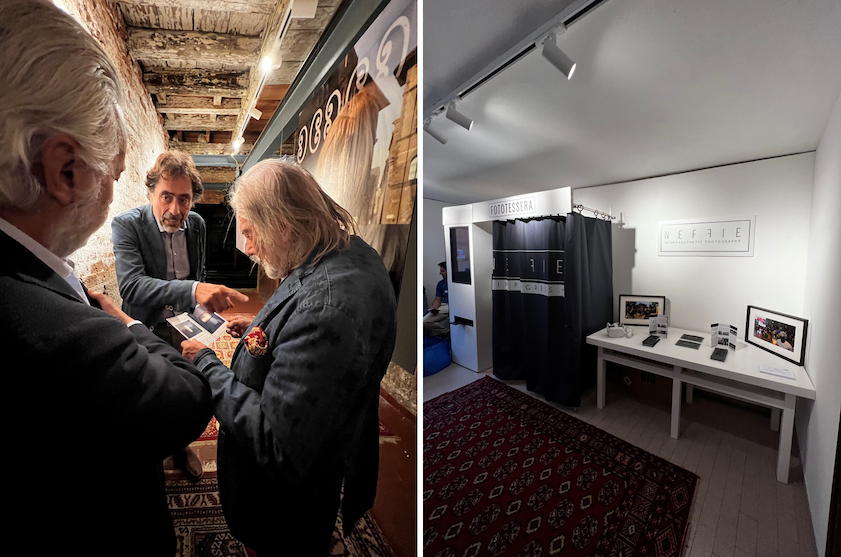
RP: Science, art, and new technologies are increasingly coming together to tell us about innovation 3.0 and the results of much scientific research on the one hand, and new aesthetic scenarios that have our attention on the other. What are your thoughts on these interactions considering also possible future developments?
FP: To answer your question, I would like to refer to the concept of “techno-aesthetic environment,” which was introduced in 2016 by philosopher Gilbert Simodon to describe all those environments in which individual and society mutually form each other through an interweaving of sensibility, technique and nature. As of today, it can be said that our entire contemporary society is a techno-aesthetic society, i.e., essentially hybrid and symbiotic, where technologies have become not only true “extensions of man”, as McLuhan’s anticipatory insights had already predicted in one of his celebrated 1964 essays, but an inescapable component of our every experiential horizon. On the other hand, even this year’s International Venice Art Biennale, entitled The Milk of Dreams, has among its main themes the relationship between individuals and technologies, imagining a post-human future characterized by hybrid and multiple beings. Along these lines, Neuroaesthetic Photography wants to investigate and explore on a multidisciplinary level this layered techno-aesthetic horizon of ours, through a creative experimentation of new technologies, creating frames of meaning in which Art becomes a guide and orientation for the future of man in Socio-Technological Ecosystems, as well as a tool for cultural, individual and collective awareness and emancipation.
AS: To complement Professor Pola’s response, I would add that promoting and ensuring human health understood as a state of physical, mental and relational Well-Being is the basis of the shared mission of the Hospital and Vita-Salute San Raffaele University. The Human Being is a biological, psychological and spiritual unicum, three intrinsically related elements that are declined in the three faculties of Vita-Salute San Raffaele University: medicine, psychology and philosophy. In all my projects I apply the model of Awareness Engineering based precisely on the interrelation between Function (Body), Emotion (Psyche) and Relationship (Soul). To answer your question, ours has always been an integrated, multidisciplinary and transdisciplinary thinking: already for many years I have been using advanced technologies such as Sensors, Artificial Intelligence and Blockchain in diagnostic and therapeutic contexts. With NEFFIE I am applying this same technology to the art world to test its limits and potential, demonstrating the power of art and imagination as a creative, constructive, and predictive power of the future.
RP: What upcoming projects, exhibitions or events are planned?
AS: During 2022, the NEFFIE project was presented on several occasions: from the World Artificial Intelligence Cannes Festival (WAICF) in Cannes, to the Catherine Issert Gallery in Saint Paul de Vence, the Mia Milan Image Art Fair in Milan, and the Computer Art Congress in Geneva (CAC.7). These events “prepared the ground” for the Virtual Exhibition in Real Time No. 4 at the end of October in Venice, which was enriched by the cultural meeting at the spaces of Palazzo Vendramin Grimani, headquarters of the Albero d’Oro Foundation, and additional dialogues held in parallel with the activities and initiatives of VeniSIA and Strategy Innovation Forum. We currently have on our agenda the finissage of the Virtual Exhibition in Real Time No. 4 in Burati Anderson Gallery, where the booth will remain until November 24th. As for upcoming projects, I can anticipate that we are working on Literary Neuroaesthetics. The idea came to me from a quote by Italo Calvino reported by Marco Belpoliti in his book L’Occhio di Calvino, where it is written that at the origin of every Calvinian tale “there was a visual image.” The textual dimension, like the visual dimension, proves to be rich in semantic, interpretive and relational potential. For this reason, I have in mind a project that aims to use the machine learning models GPT-3 and GPT-J to experiment with the enormous creative potential offered by the artificial generation of a written text: the Metatext. The project will have a strong authorial imprint and will explore the new modes of writing enabled by computational creativity through interaction, co-creation and reshuffling between the figure of the viewer and that of the artist.
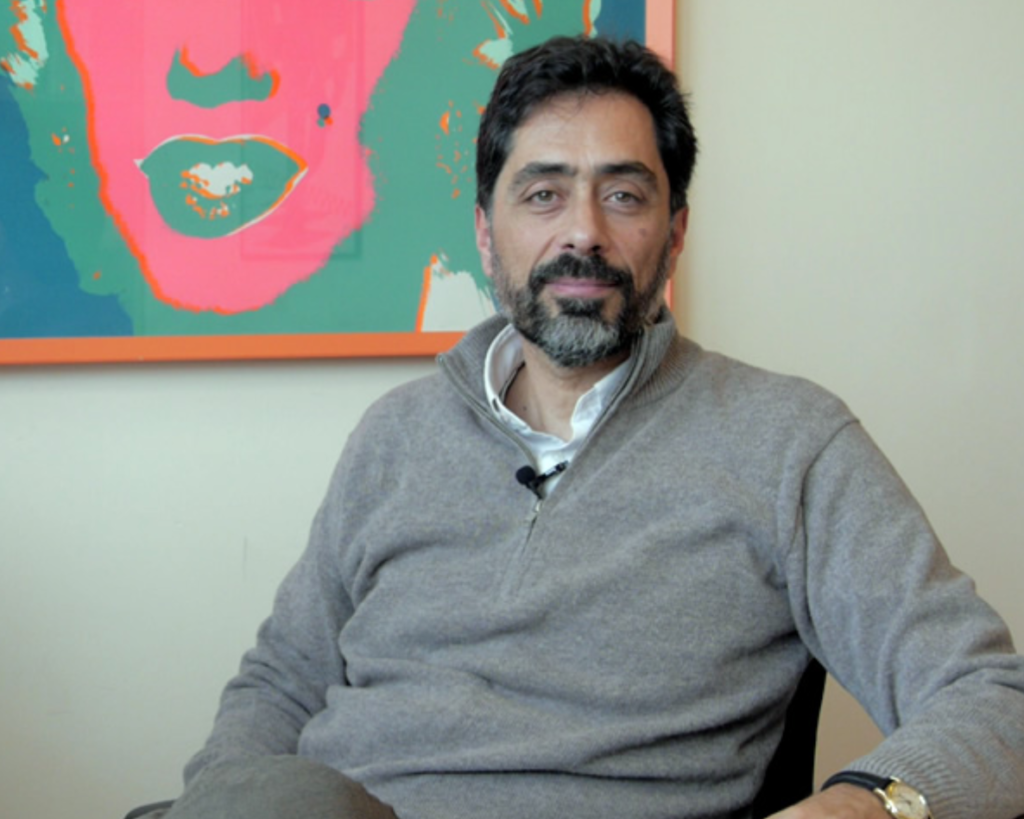
Who’s Who: Alberto Sanna
Graduated in Nuclear Engineering from Politecnico di Milano, Alberto Sanna is Director of the Research Center Advanced Technology in Health and Well-Being at San Raffaele Hospital in Milan. He is responsible for research programs and coordinator of international projects aimed at promoting healthier and more conscious individual and collective behaviors in socio-technological ecosystems: Smarter and Safer Hospital, Smarter and Healthier Life, Smarter and Healthier City, Dependability of Critical Infrastructures, with related Tech Transfer and Business Development activities. He has presented his research activities in more than 150 high-level international conferences and is Professor of Health Informatics at the Vita-Salute San Raffaele University of Milan. Among his many work and research activities, he is Co-Founder of Memooria.org, a platform offering digital archiving and photographic acquisition services of artworks. An avant-garde photographer, Visual Arts, Cognitive Neuroscience, Artificial Intelligence, NFT and Metaverse converge in his work, along with Literature and Videogames. The Engineering of Awareness, TEDx Trento: https://www.youtube.com/watch?v=TMhj4Q30q0U
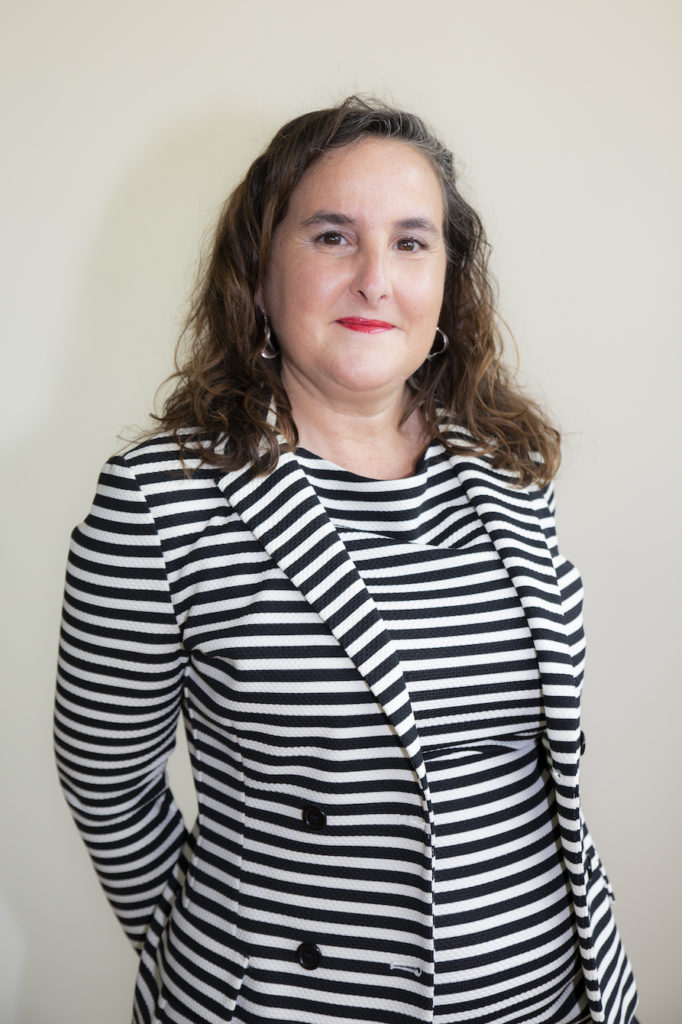
Who’s Who: Francesca Pola
Francesca Pola is Associate Professor of Contemporary Art History at Vita-Salute San Raffaele University in Milan, where she is a member of the board of directors of CRISI – Interdisciplinary Research Center for the History of Ideas and ICONE – European Research Center for History and Theory of the Image. She also teaches at the Catholic University of Milan and at IES Abroad, The Institute for the International Education of Students.
She has been Fulbright Distinguished Lecturer Chair in Italian Studies at Northwestern University of Chicago (2016), Italian correspondent for “Artforum” (2015-20), curator of MACRO Museo Arte Contemporanea Roma (2009-2012), the multimedia itineraries of Gallerie d’Italia (2011-2016), the Contemporary Art exhibitions at Villa Pisani (2007-2018), and to date of the Museo d’Arte Contemporanea all’Aperto di Morterone (Morterone Museum of Contemporary Art Outdoors). She is a member of the scientific committee of the Archivio Cesare Zavattini in Reggio Emilia, of the international scientific committee of the ZERO foundation in Düsseldorf, and of the strategic committee of the Fondation Walter et Nicole Leblanc in Brussels; she has collaborated on various exhibition and editorial projects of the Peggy Guggenheim Collection in Venice (2007-2016). Curator of exhibitions and author of publications for numerous museums, publishers and art institutions, in Italy and abroad, she has among her main strands of historical-critical investigation: Italian art from the 1950s to the 1970s and its international connections; the work of Piero Manzoni; 20th-century American art and its relations with the Italian and European context; the contemporary art system as a complex and dynamic entity; Ugo Mulas’ photography; 20th-century sculpture and abstract research; and the relations between art, new media and the digital horizon. https://www.unisr.it/docenti/p/pola-francesca
Research Center for Advanced Technology in Health and Well-Being, IRCCS San Raffaele Hospital
The Research Center for Advanced Technology in Health and Well-Being at San Raffaele Hospital in Milan is focused on disease prevention and the promotion of well-being with Information Technology applications in Health: the eServices for Life and Health. Through Information Technology, Automation, and Robotics and in cooperation with leading industries in the medical, pharmaceutical, food, ICT, scientific research institutes and policy makers markets, it aims to enable and promote healthier and eco-sustainable and conscious lifestyles by lowering the invisible cultural, organizational, economic and environmental barriers that hinder stakeholders’ efforts toward more responsible behaviors in everyday life. Website: https://research.hsr.it/en/centers/advanced-technology-in-health-and-wellbeing.html
ICONE – European Research Center in History and Theory of the Image
The European Research Center in History and Theory of the Image (ICONE) at the Vita-Salute San Raffaele University of Milan aims to promote the study of the figural and symbolic dimension understood as a vehicle for the vast heritage of allegories, metaphors and forms of expression that constitutes the heart of European civilization, its identity and self-understanding, as well as the cultural reservoir from which thought draws in its continuous critical and creative activity. It investigates both the traditional forms of expression of image culture (the plastic and figurative arts, architecture, theater, dance, and music) and the theoretical interrogation of photography, cinema, and the new electronic-digital media of expression.
This is the ideational fulcrum from which the Master’s Degree Course in Theory and History of the Arts and Image of the Faculty of Philosophy of the Vita-Salute San Raffaele University of Milan was born, offering a training course that is unprecedented in the national university scene, based on the interweaving of the history of the arts with the theoretical knowledge and critical tools of the disciplines of the philosophical and aesthetic areas. From A.Y. 2022/2023, the course includes the launch of an innovative digital teaching project. Website ICONE https://www.unisr.it/ricerca/centri/icone – Master’s Degree Course in Theory and History of the Arts and Image: https://www.unisr.it/offerta-formativa/filosofia/corso-di-laurea-magistrale-in-teoria-e-storia-arti-immagine

